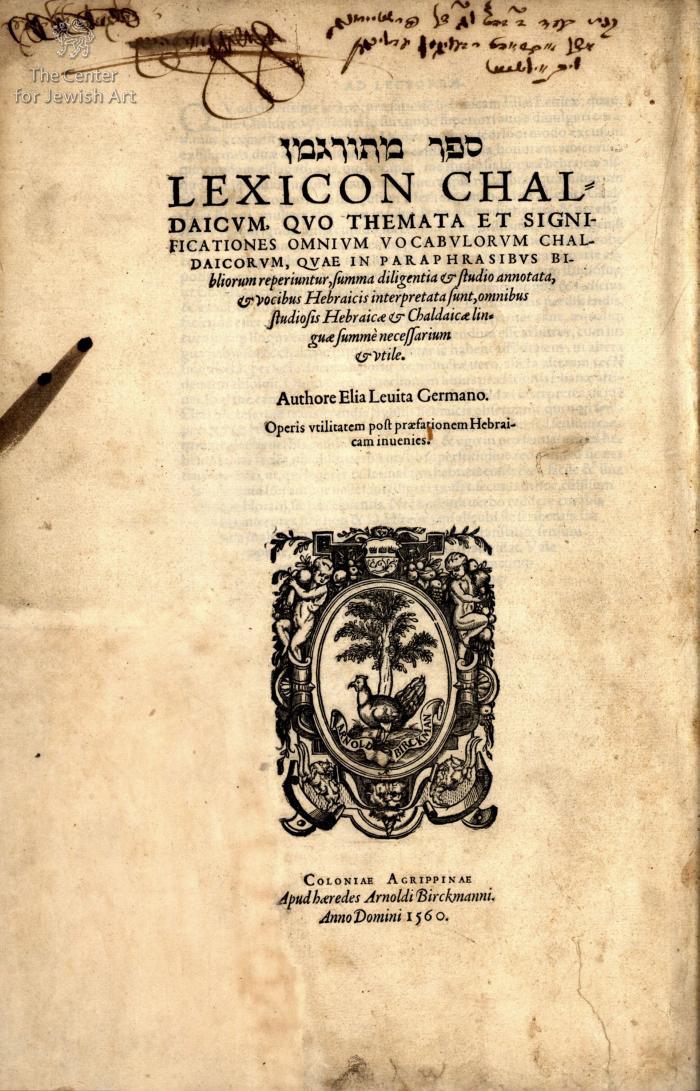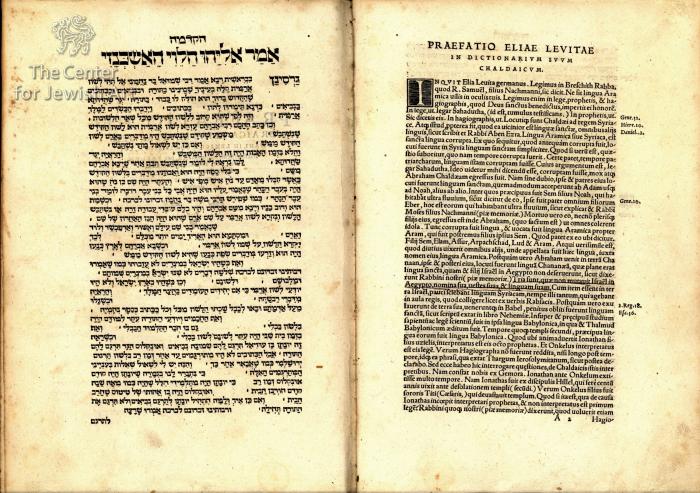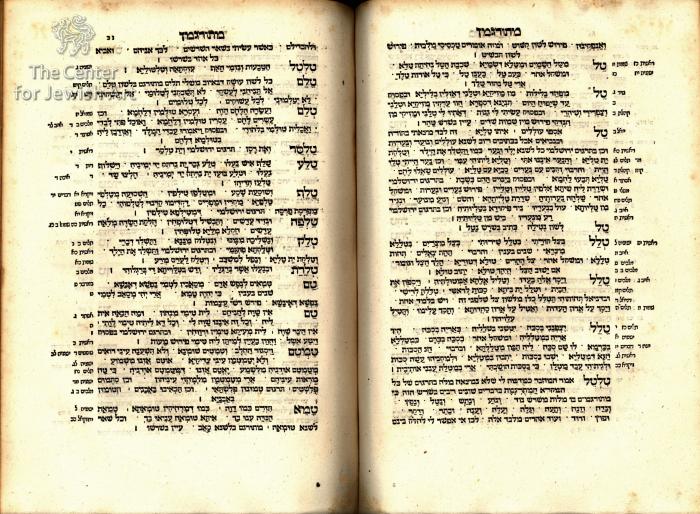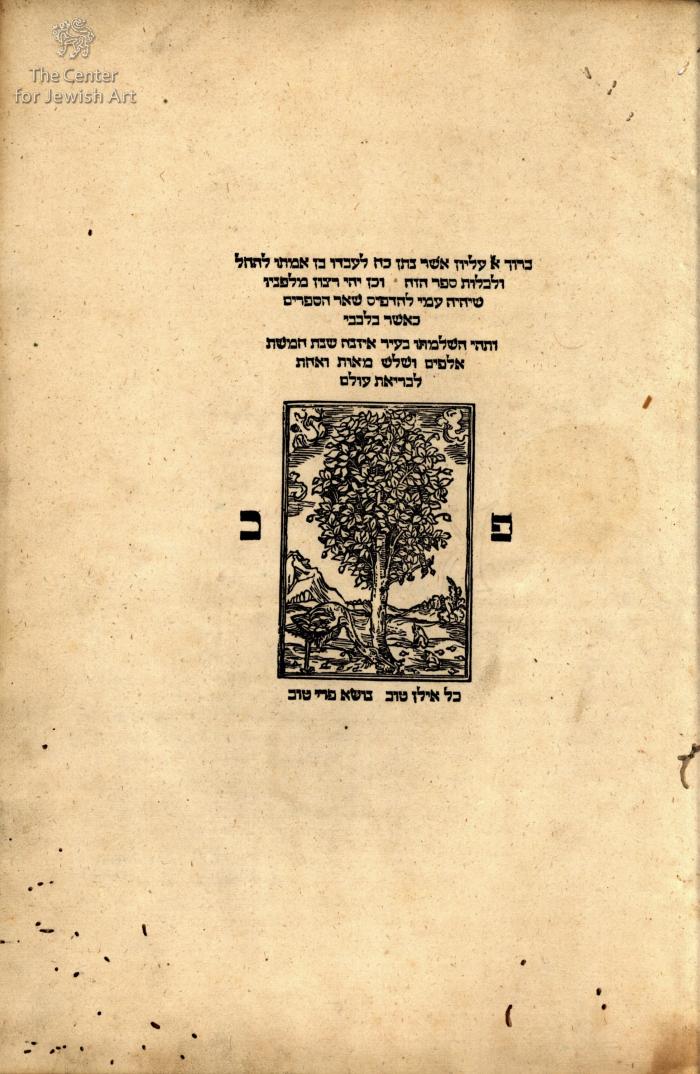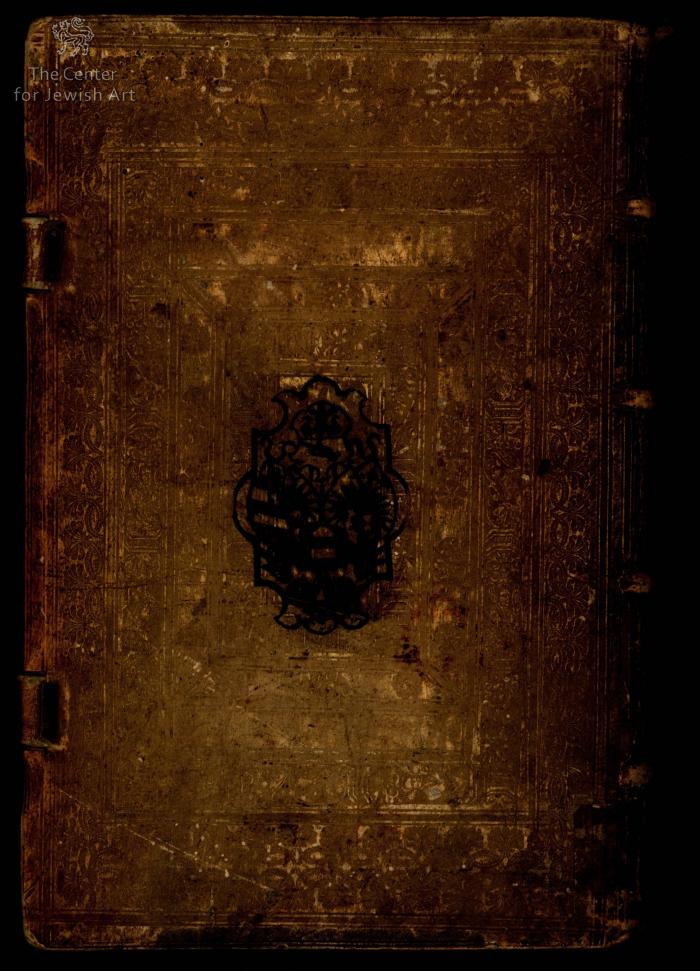Obj. ID: 35973 Meturgeman by Eliyahu ben Asher Halevi Ashkenazi (Elia Levita), Isny im Allgäu, 1541
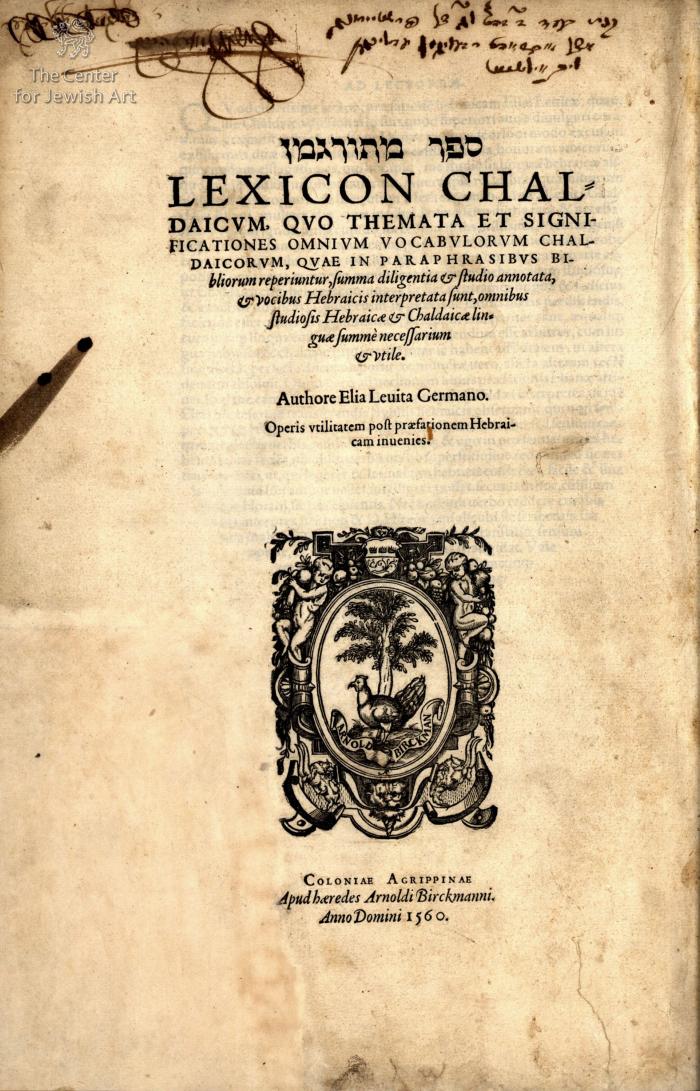
sub-set tree:
This text was prepared by William Gross:
Lexicon of Aramaic terms by the grammarian, translator and poet R. Elijah ben Asher ha-Levi Ashkenazi Levita (Bahur, 1468 – 1549). One of several dictionaries compiled by Bahur, Meturgeman is a compilation of Aramaic words from translations of the Bible into that language, an Aramaic-Hebrew dictionary and explanations of the Aramaic language in the Targum on the Torah.
Elia Levita (13 February 1469 – 28 January 1549), (Hebrew: אליהו בן אשר הלוי אשכנזי) also known as Elijah Levita, Elias Levita, ֹlie Lיvita, Elia Levita Ashkenazi, Eliyahu haBahur ("Elijah the Bachelor") was a Renaissance Hebrew grammarian, scholar and poet. He was the author of the Bovo-Bukh (written in 1507–1508), the most popular chivalric romance written in Yiddish. Living for a decade in the house of Cardinal Egidio da Viterbo, he was also one of the foremost tutors of Christian notables in Hebrew and Jewish mysticism during the Renaissance.
Elijah’s objective was to accomplish for Aramaic what Kimhi had done with his Shorashim for Hebrew. Roots of words and their development are shown. Nouns and adjectives derived from verbs are shown under the root. Variant Aramaic expressions for Hebrew terms are noted, with accompanying explanations.
Levita was invited to Isny by the printer Paulus Fagius, who was responsible for printing almost twenty Hebrew, Hebrew/Latin, and Yiddish books in Isny between 1540-1542. Fagius was a pastor, Christian-Hebraist, humanist, disciple of Reuchlin, and a student of Hebrew. At the time, Levita was working in Venice as a proofreader for Bomberg, and was having difficulty finding a publisher for his dictionaries, which Fagius saw as a valuable tool for Christian-Hebraists. Levita accepted Fagius' offer to become the director of his press, and brough with him typographical material which he had acquired in Augsburg. The partnership between Levita and Fagius continued when the later relocated his press to Konstanz in 1543.
There were two editions of this book in 1541. This edition has Latin additions. Both editions are typographically identical, besides an additional title page and letter by the Latin printer and [6] supplementary leaves with the author's introduction in Hebrew and Latin at the end of the book which only appear in the Latin edition.
Fagius' device appears on the final page: a tree (fagus) planted by a river, with frogs, and to the left, a stork on one foot eating a frog, all within a frame. On the sides are the Hebrew letters ב and פ , for Paulus Fagius. On the bottom is the phrase, in Hebrew, from the Christian Bible, “Every good tree gives forth good fruit” (Matthew).
[4], 164, [2] leaves


